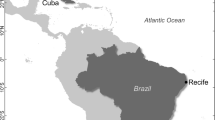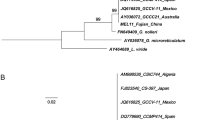Abstract
Profiles of diarrhetic shellfish poisoning (DSP) toxins produced throughout the growth cycle and the cell cycle of the toxigenic marine dinoflagellate Prorocentrum lima were studied in triplicate unialgal batch cultures. Cells were pre-conditioned at 18 ± 1 °C, under a photon flux density (PFD) of 90 ± 5 μmol m−2 s−1 on a 14 h light:10 h dark photoperiod. In exponential growth phase, cultures were synchronized in darkness for 17 d. After dark synchronization, cultures were transferred back to the original photoperiod regime. Cells were harvested for DSP toxin analysis by LC-MS (liquid chromatography with mass spectrometry), and double-stranded (nuclear) DNA was quantified by flow cytometry. The cell populations became asynchronous within approximately 3 d after transition from darkness to the 14 h light:10 h dark photoperiod. This may be due to the prolonged division cycle (5 to 7 d) that is not tightly phased by the photoperiod. Unlike other planktonic Prorocentrum spp., cytokinesis in P. lima occurred early in the dark and ceased by “midnight”. Cellular levels of the four principal DSP toxins, okadaic acid (OA), OA C8-diol-ester (OA-D8), dinophysistoxin-1 (DTX1) and dinophysistoxin-4 (DTX4), ranged from 0.37 to 6.6, 0.02 to 1.5, 0.04 to 2.6, and 1.8 to 7.8 fmol cell−1, respectively. No toxin production was evident during the extended period of dark synchronization nor during the initial period when NH4 was consumed as the major nitrogen source. Soon after the cells were returned to the 14 h light:10 h dark cycle and they began to take up NO3, cellular levels of all four toxins gradually increased. This increase in DSP toxins usually occurred in the light, marked by a rise in DTX4 levels that preceded an increase in the cellular concentration of OA and DTX1 (delayed by 3 to 6 h). Thus, DTX4 synthesis is initiated in the G1 phase of the cell cycle and persists into S phase (“morning” of the photoperiod), whereas OA and DTX1 production occurs later during S and G2 phases (“afternoon”). No toxin production was measured during cytokinesis, which happened early in the dark. The evidence indicates that toxin synthesis is restricted to the light period and is coupled to cell cycle events.
Similar content being viewed by others
Author information
Authors and Affiliations
Additional information
Received: 3 September 1998 / Accepted: 30 March 1999
Rights and permissions
About this article
Cite this article
Pan, Y., Cembella, A. & Quilliam, M. Cell cycle and toxin production in the benthic dinoflagellate Prorocentrum lima. Marine Biology 134, 541–549 (1999). https://doi.org/10.1007/s002270050569
Issue Date:
DOI: https://doi.org/10.1007/s002270050569




